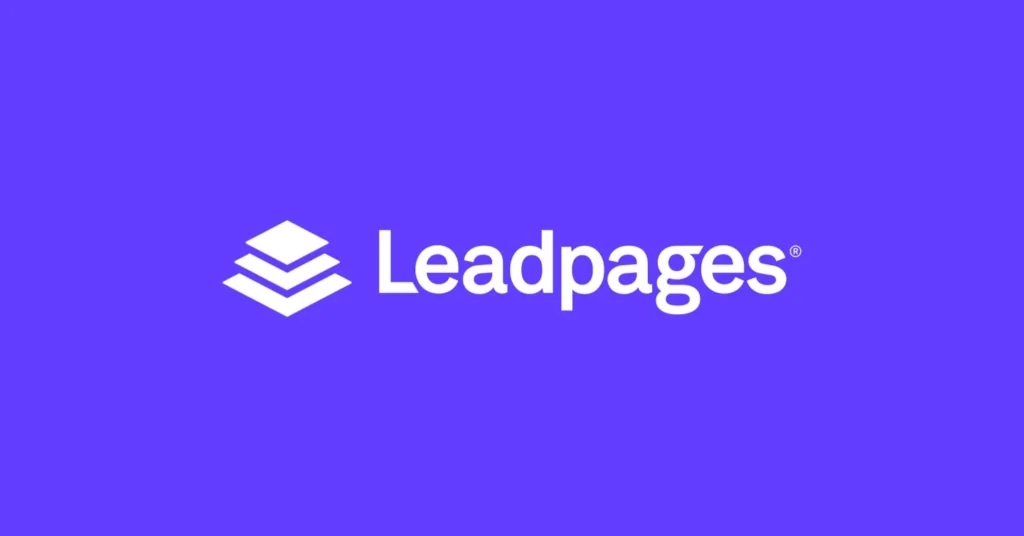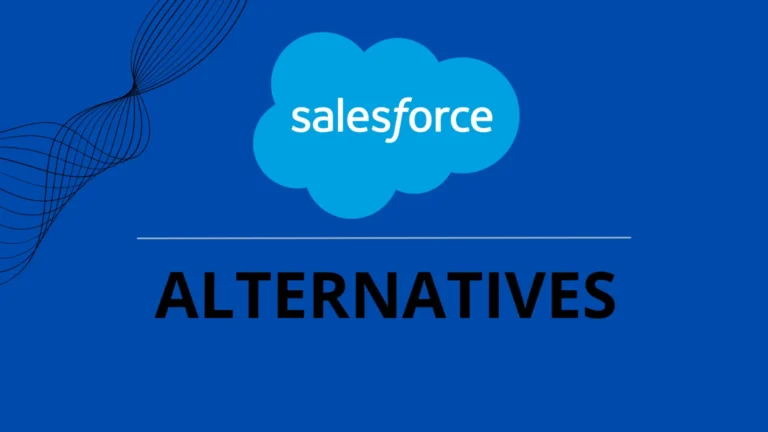When it comes to building high-converting landing pages, sales funnels, and digital marketing campaigns, two platforms often come up in the conversation: Leadpages and ClickFunnels. Both are incredibly popular and have their loyal following, but choosing the right one for your business depends on your goals, budget, and overall marketing strategy.
As the owner of a digital agency myself, I’ve helped clients with a variety of digital marketing tools, and both Leadpages and ClickFunnels have their advantages depending on the situation. In this comparison of Leadpages vs ClickFunnels, we’ll dive deep into their features, differences, and benefits to help you determine which tool is the best fit for your needs.
Quick Navigation ↓
What Is Leadpages?

Leadpages is a powerful landing page builder designed to help businesses capture leads and grow their email list. It’s one of the easiest tools on the market for creating beautiful, high-converting landing pages, even for those with little technical expertise.
Key Features of Leadpages:
- Drag-and-Drop Builder: You don’t need to know how to code to create beautiful, responsive landing pages.
- Templates: Leadpages offers a large selection of pre-designed templates for various industries and goals, including webinars, product launches, and sales pages.
- A/B Testing: Built-in A/B testing allows you to experiment with different headlines, designs, and CTAs to see what converts best.
- Integrations: Leadpages integrates with a wide range of tools, including email marketing platforms (e.g., Mailchimp, ConvertKit), CRM systems, and payment processors like Stripe.
- Lead Magnets: Easily create opt-ins such as eBooks, free trials, and discount codes to capture leads.
- Pop-ups and Alerts: Leadpages also allows you to add pop-ups and exit-intent alerts to boost conversions.
What Is ClickFunnels?

ClickFunnels is an all-in-one sales funnel builder that helps businesses not only create landing pages but also manage entire sales processes from start to finish. It’s an essential tool for marketers who want to build comprehensive funnels that lead prospects through the entire customer journey.
Key Features of ClickFunnels:
- Sales Funnel Builder: ClickFunnels offers a visual funnel builder that allows you to map out the entire customer journey, from lead capture to upsells.
- Pre-built Funnel Templates: ClickFunnels comes with a vast collection of pre-designed funnel templates, whether you’re running a webinar, an eCommerce store, or a product launch.
- Email Automation: ClickFunnels allows for automated follow-up sequences and email campaigns, saving you time while nurturing your leads.
- Affiliate Management: ClickFunnels has a built-in affiliate management system, allowing you to run your own affiliate marketing programs.
- Payment Integration: You can integrate with Stripe, PayPal, and other payment processors to handle sales directly from your funnels.
- Advanced Analytics: Track every step of your sales funnel to analyze performance and optimize conversion rates.
Key Differences Between Leadpages and ClickFunnels
While both platforms are powerful, they cater to slightly different needs. Here’s a breakdown of the main differences between Leadpages and ClickFunnels:
1. Funnel Focus vs. Landing Pages
- Leadpages is mainly a landing page builder. While you can create sales pages, opt-ins, and lead magnets, Leadpages doesn’t offer the same level of functionality for building multi-step funnels as ClickFunnels does.
- ClickFunnels, on the other hand, is designed around the concept of a sales funnel. If your goal is to create an entire funnel—complete with landing pages, email automation, upsells, and follow-up sequences—ClickFunnels is a more complete solution.
For example, when I build a funnel for a client, we often use ClickFunnels to map out the entire customer journey, from initial lead capture to final sale. But for a simple landing page to promote a webinar or lead magnet, Leadpages is often the go-to option.
2. Ease of Use
- Leadpages is known for its simplicity and ease of use. The drag-and-drop editor allows anyone—regardless of their technical expertise—to create professional-looking pages in minutes. It’s a great option for businesses that want a straightforward, quick solution.
- ClickFunnels has a steeper learning curve because of its extensive features. While it’s intuitive once you get the hang of it, newcomers might feel a bit overwhelmed by its broader capabilities and the sheer number of options available.
I’ve found that businesses with simpler needs—like those just starting to build their email list—tend to gravitate toward Leadpages. But if you’re looking to create complex sales funnels with multiple steps, ClickFunnels’ added functionality pays off in the long run.
3. Pricing
- Leadpages offers a more budget-friendly entry point. Pricing starts at around $39/month, which includes the ability to create unlimited landing pages, pop-ups, and alert bars. For small businesses or startups that don’t need complex sales funnels, this is a great option.
- ClickFunnels starts at $149/month for the basic plan, which includes access to funnel-building features, email automation, and the affiliate management system. While this higher price point can be a barrier for smaller businesses, it’s worth it for those who need a full-fledged funnel-building platform.
N.B.: The prices of any plan may change over time. Visit each platform’s official website for the most up-to-date information.
I’ve seen a few clients who initially chose Leadpages for their simplicity and lower price, only to outgrow it and eventually move to ClickFunnels as their business expanded and they needed more robust sales funnel features.
4. Support and Community
- Leadpages offers solid customer support, including live chat, email support, and a knowledge base. While it doesn’t have as large of a community as ClickFunnels, it still has an active user base where you can get tips and ideas.
- ClickFunnels has an extensive community, including the famous ClickFunnels Facebook group where marketers share their successes, strategies, and insights. In addition, ClickFunnels offers 24/7 customer support via chat and email, and their educational resources (like the ClickFunnels 2.0 training) are exceptional for those looking to master funnel-building.
Which One Is Best for Your Business?
Ultimately, the best choice between Leadpages and ClickFunnels depends on your business needs:
Choose Leadpages if you need:
- Simple, high-converting landing pages without the complexity of sales funnels.
- An easy-to-use platform that doesn’t require a steep learning curve.
- A more affordable solution for capturing leads, building opt-ins, and testing landing page variations.
Choose ClickFunnels if you need:
- An all-in-one solution that allows you to build multi-step sales funnels.
- Advanced features like email automation, upsells, and affiliate marketing.
- A tool that helps you nurture leads and close sales from a single platform, making it ideal for marketers or business owners focused on scaling.
My Personal Experience
I’ve personally used both tools depending on the project. For simple landing pages, I always recommend Leadpages—it’s fast, efficient, and incredibly user-friendly. But for clients who want a more comprehensive sales funnel solution, ClickFunnels is my go-to.
Each platform serves a different purpose, and the right one will depend on your business model. If you’re focused on growing your lead list with easy-to-build landing pages, Leadpages is a fantastic option. But if you’re ready to scale with automated funnels that nurture and convert leads, ClickFunnels will be your best friend.
In Summary
Finally, Leadpages vs. ClickFunnels is a decision that hinges on the complexity of your marketing needs. Both have their strengths, but by carefully considering your goals, budget, and the level of sophistication you need, you can choose the right platform to drive your business forward.
Remember, it’s not just about the tool—it’s about how you use it. Both Leadpages and ClickFunnels offer incredible value when used strategically!








